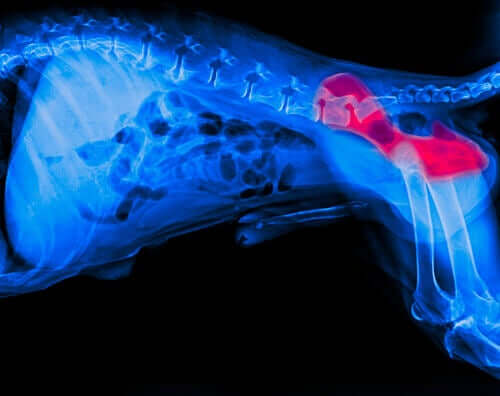Learn All About Canine Hip Dysplasia
Though you may have already heard of canine hip dysplasia, you might not know what it actually is, what causes it, or what treatment options are available. If you want to know more about this condition, you’ll find everything you need to know in this article.
What is canine hip dysplasia?
Dysplasia is a condition that affects the hip joints and the surrounding area. It is caused by a malformation of the femoral head and the corresponding hip joint. When this happens, the joint can start to deteriorate, causing discomfort and lameness.
Canine hip dysplasia starts to develop when the dog is around 4 or 5 months old, and gets worse as the pelvis grows. Hip dysplasia is classified according to severity, prognosis and treatment.
Main causes
While hip dysplasia undeniably has a genetic factor, there are several other causes:
- Poor diet: too much protein and lack of nutrients.
- Obesity
- Too much or too little exercise
- Hip dysplasia is a lot more common in large and medium-sized dogs
- Some breeds, such as Tibetan mastiffs, German Shepherds or Golden Retrievers are more prone to developing hip dysplasia
Diagnosis of canine hip dysplasia
Hip dysplasia has a number of symptoms. The most common include lameness, difficulty getting up or a dog continually staying on its feet. So, if you notice any of these symptoms, you need to consult a vet, who will do an x-ray to confirm the diagnosis.
Treatment
There are several ways to treat dysplasia, depending on how far advanced it is. Most treatment plans are designed to reduce pain and slow deterioration. However, the key to successful treatment is an early diagnosis. Starting treatment as soon as symptoms appear makes things much easier.
Vets often talk about preventative care, which includes physiotherapy, the use of a wheelchair, or hip supports. These devices stabilize the pelvis, preventing atrophy and stimulating muscular activity around the affected joints.
There are also a number of medicinal treatments, which vets will usually prescribe to older dogs with advanced dysplasia, where the chances of needing surgery are higher.
In these cases, a vet will usually prescribe anti-inflammatories to help reduce pain. They may also combine them chondroprotectors, which are nutritional supplements that promote hydration of the cartilage and slow down joint deterioration.
Finally, there are several surgical options, that can help to improve the affected area.
Alternatively, you could opt for a full hip replacement. This is usually very effective, but it does come with a hefty price tag.
As always, the diagnosis and treatment of any animal should be left to a trusted vet.
One of the most important things you can do for your pet is to control their diet and weight. Excess weight can put strain on the affected joints.
You should also watch the amount of exercise they do, making sure they get regular, moderate exercise every day. Following these tips won’t cure dysplasia completely, but it can help give your pet a better quality of life.
All cited sources were thoroughly reviewed by our team to ensure their quality, reliability, currency, and validity. The bibliography of this article was considered reliable and of academic or scientific accuracy.
- Witsberger, T. H., Villamil, J. A., Schultz, L. G., Hahn, A. W., & Cook, J. L. (2008). Prevalence of and risk factors for hip dysplasia and cranial cruciate ligament deficiency in dogs. Journal of the American Veterinary Medical Association, 232(12), 1818-1824.
- Morgan, J. P., Wind, A., Davidson, A. P., & Audell, L. (2000). Hereditary bone and joint diseases in the dog: osteochondroses, hip dysplasia, elbow dysplasia. Schlütersche.
- Leighton, E. A. (1997). Genetics of canine hip dysplasia. Journal of the American Veterinary Medical Association, 210(10), 1474-1479.
